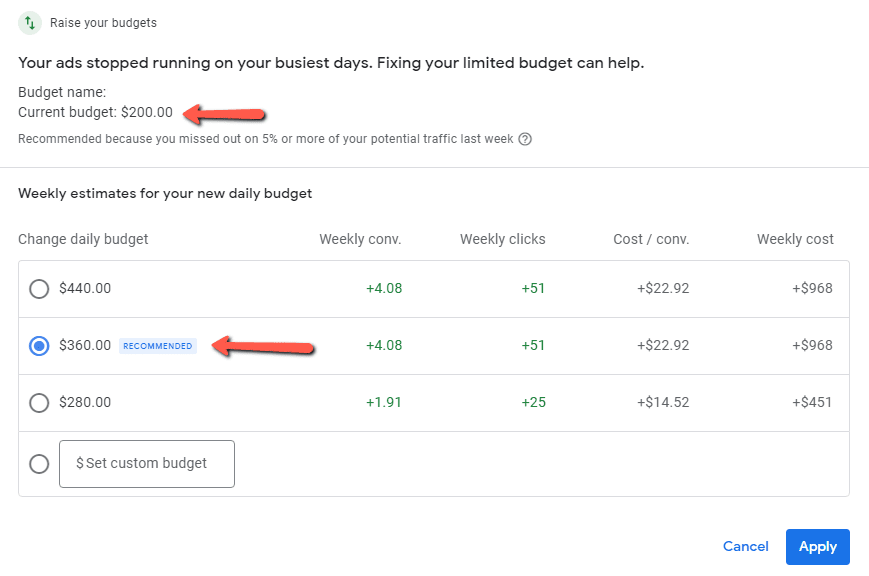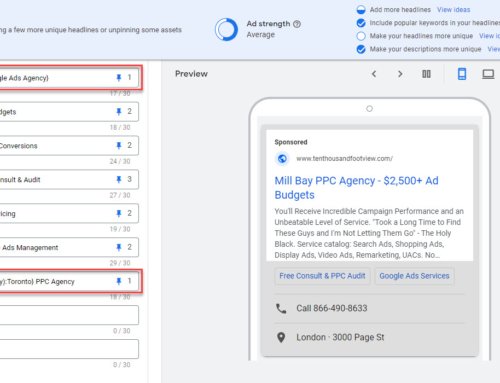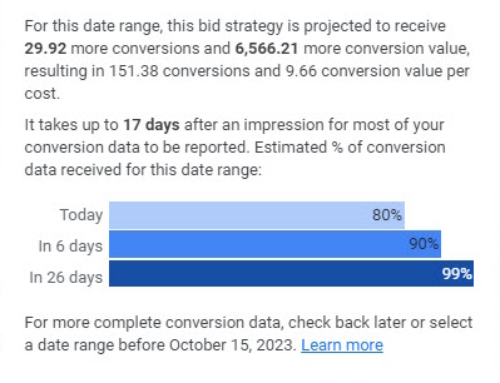Congratulations, you have a well-performing Google Ads search campaign up and running. What comes next is typically a scaling phase, where you try to boost conversion volume or value while controlling your CPA or ROAS figure.
In this article, I’ll go through a myriad of ways you can potentially scale Google Ads while not killing your margins.
Before You Start
Before scaling you should first ensure you’re using non-last-click attribution. Ideally, you should set your attribution model to data-driven, which is now broadly supported in most accounts.
The main reason for this is as you scale you are likely going to generate more ad clicks that are higher up the funnel. To track the value of and optimize these it’s necessary to count partial conversions against those as users may take multiple visits to convert.
1. Uncap Your Budgets
Unless you’re running a Max Clicks, Max Conversions or Max Conversion Value bidding strategy (without any targets) you should avoid running capped budgets. A capped budget will prevent you from spending more and driving more conversions while staying under or at your current conversion goals.
You can get an idea of how much this is holding you back simply by looking at impression-share lost due to budget. Raising your budget to or above what Google recommends will immediately increase your impressions, clicks, and conversions.
Note: you may see some increase in your CPA or decrease in your ROAS as a result, if these numbers are currently better than your set targets.
2. Lower Your Conversion Targets
If your campaign is restricted by your tCPA or tROAS target you may want to re-evaluate those. Have a close look at your closing rates, client lifetime value and cash flow numbers. Can you afford to take a little less profit up front to make more revenue on the backend? Great, lower your conversion targets and watch your volume increase.
3. Scale Google Ads by Targeting More Languages
Most English language advertisers choose to only target English in their search campaigns. Consider expanding beyond English to boost your campaign potential. For example, adding Spanish in the US and French in Canada will typically give your campaigns a nice boost in impressions, clicks and conversions.
Here are some statistics:
- 53 million Spanish speakers in the US, 11.6 million of which are bilingual
- 10.4 million Canadians are bilingual, while another 8 million are french speaking only
Also, consider specific scenarios for your business. For example, are you running a retail business that’s located in Chinatown? You had better be targeting Asian languages or you will be missing out on a huge portion of your potential audience.
Importantly, while users may set their browser to their preferred language, that doesn’t mean they cannot read English. Furthermore, even visitors that aren’t fluent in English can translate your ads and website into their preferred language as needed. Lastly, if virtually all of your competitors are English only, you aren’t going to be losing any of these folks due to the language barrier.
If you’re using automated bidding you are very likely going to see a similar CPA or ROAS while increasing your conversion volume and value.
However, there is no language reporting in Google Ads, so you will not be able to see how different languages perform. You’ll have to trust the black box in this case.
4. Expand Location Targeting
If you’re a local brick and mortar business you should test expanding beyond your current geographical target area. A great way to do this is by adding several concentric radius target circles or simply by adding more locations. It’s more than likely that you will see noticeably lower click-through rates and conversion rates from areas that are further away from your business.
If you’re using manual bidding you will need to monitor and set bid adjustments to compensate for this to bring your campaign goals into line for each region. If you’re using automated bidding you don’t have to worry about this, Google will automatically bid lower as needed to optimize your budget.
That said, I would halt any regions that are eating up your budget without driving many conversions.
5. Try Broad Match Keywords
Google has been after everybody to switch completely to broad match. Most of us haven’t drunk the Kool-Aid yet, but there is value in running more keywords when you are trying to grow.
One important tip if you’re using manual bidding with broad match: set very low initial bids for your broad match keywords, and increase over time as you’re hitting your conversion goals.
Here are a few different ways you can implement this.
Implement a few keywords at a time
This is the approach we use with most of our clients. Find your top-performing phrase-match keywords or search terms and add them as broad match keywords. You can run these in the existing ad groups or create a separate ad group to manage broad match keywords separately.
Monitor search terms for these keywords very closely and add negatives as needed to block irrelevant search queries. Don’t worry too much about search terms that aren’t highly relevant, we’re trying to drive higher funnel visits, and Google will also be optimizing which search terms it bids on over time.
Split test broad against what you have now
Google now offers an experiment to split test all your keywords as broad match. This is a great way to evaluate whether Google is right in recommending going fully broad. And the beautiful thing is you can stop the experiment at any time if your performance tanks.
I highly recommend doing this rather than the next approach.
Convert everything to broad match
There are only two scenarios where I will ever do this for a client.
First, if the client wants to be super aggressive with budget and bid. This rarely happens and is usually only viable if said client is making an absolute killing in sales. Second, if we’re really struggling to get traffic and there aren’t enough monthly conversions to realistically split test broad against the current keyword types.
But if you want to go for it, don’t say I didn’t warn you. You can still reverse this but it’ll take a bit of time to go through your ad groups to swap everything out.
6. Expand Your Keywords
Similar to changing to broad match keywords, this involves expanding your keywords. In this case, you should be looking for keywords that are perhaps further up the funnel than what you’re currently running.
For example, if you have a plumbing business you could test ‘how to’ keywords. Generally, people looking for something like ‘how to fix a leaky faucet’ want to do it themselves. These clicks rarely convert. But, there is a good chance that some visitors will eventually give up on fixing it themselves and hire a professional.
By getting these folks onto your website you have primed them with your brand. This means they are more likely to (a) click on a follow-up search ad, (b) come back through a remarketing campaign, or (c) come back organically via brand search or browser bookmark.
7. Try Branded Search
If you aren’t already running branded search you should seriously consider it. In particular, if your competitors are targeting your brand as keywords (on purpose or by accident) I strongly recommend protecting yourself by placing your own ad at the top of results.
Here’s how we do this at our agency:
- Branded search should always be in its own campaign
- Uncapped budget
- Use Top-Of-Page or Absolute Top-Of-Page bidding with a 90-95% goal
- Add your brand with and without spaces and all variations using exact or phrase match variations as appropriate
- Target your home page and include your brand name in the headline and description (consider pinning those)
- Monitor search terms closely for any irrelevant (non-branded) queries and block those
8. Try Competitor Keywords
While targeting competitor keywords generally performs poorly compared to topical keywords, it can generate incremental conversions. You may be a good candidate for this strategy if you have a stronger product/offer than the competitors you’re targeting. This may include a lower price, more utility or better features, more esthetically pleasing design, or whatever.
Highlight these points in your ads but don’t call out your competitor by name unless you want to do a comparison on your landing page.
You will find that your CPCs will tend to be very high here and that will yield similarly high CPAs. Be prepared to pay a premium to ‘eat your competitors’ lunch.’
9. Run a Remarketing Campaign
The vast majority of businesses will benefit from running some form of Google Ads remarketing campaign. The main exception where remarketing tends not to work well are for businesses that largely provide urgent/emergency services.
Outside of that, if you aren’t running remarketing you should make this a high priority.
Right now we are finding the most success with Discovery ads at my agency. While traditional display ads used to work extremely well, we’ve seen a substantial decline ever since Apple’s iOS privacy restrictions went into effect in early 2021.
Discovery ads run on Google’s own inventory (Gmail, newsfeed, YouTube discovery page) and therefore offer much higher quality placements. In addition, there is almost no chance of click fraud, which is an ongoing issue with Google’s Adsense program. Most importantly, these ads only serve to users that are actively logged into a Google Ads account, which means these folks are fully trackable when using enhanced conversion tracking.
Here are some basic considerations.
Audiences
First, you need to figure out a reasonable time period for targeting previous visitors to your site. If you sell impulse buy items you might want to keep your time range short at 7 or 30-days max. If you offer strategic business consulting you may consider running remarketing ads for at least up to 90-days and perhaps much longer.
If you offer a range of different services you might want to segment your audiences by which service page they visited and then run only relevant ads to that user.
Keep in mind that your default audiences will include people that visited from various channels, not only Google Ads.
Don’t be afraid to run a number of different audiences and monitor performance. If you’re using automated bidding these will take care of themselves. If you’re using manual bidding you will need to set audience bid adjustments based on your conversion performance.
Budget
Start with no more than 5-10% of your paid search budget and scale up as appropriate.
Creative
Run a similar offer to what you’re running in your search ads. Consider sweetening the remarketing offer to boost clicks and conversions. Use high-quality images from your site rather than generic stock photos and use all the headline and description positions that are available.
One last tip is to ensure that you’ve added your remarketing lists to your search campaigns so that Google can see and bid up/down as appropriate on previous visitors.
10. Enhance Your Creatives
Check out your impression-share lost due to rank. This reflects times your ads are not running because the search query / keyword / ad / landing page combination is not relevant enough. The easiest way to fix this is to add keywords to your Responsive Search Ads.
In conjunction with improving ad rank, you should work on your click-through rate (CTR). Increasing CTR involves writing ads that are more relevant and compelling to your audience. Here are some tips on writing great creatives from an earlier post I wrote.
The combination of higher impression share and higher CTR means more clicks and at a lower average CPC. This will ultimately yield more conversions at a lower CPA.
Finally, it’s always worth having a look through your keywords to ensure that they are logically divided into ad group themes. It’s easy to use tools like Google’s keyword recommendations to create bloated ad groups that aren’t well aligned with your ads. Doing a simple regroup and boosting ad relevance can make a big difference on both exposure and performance.
11. Run a Performance-Max campaign
The new Performance-Max campaign type is a full-funnel catch-all that runs your ads across all inventory types available:
- dynamic search
- display network
- discovery (Gmail, newsfeed, YouTube discovery page)
- video (YouTube placements)
- shopping (when including a shopping feed)
We’ve seen amazing results with these and it’s the simplest way to scale Google Ads search-only accounts. Besides finding additional high-converting keywords you’re not currently targeting, you will get in front of your audience further up the funnel with display, discovery, and video placements. This can also boost search campaign performance, particularly in branded search, but also raise CTRs and conversion rates for topical keywords.
I recommend starting with a budget that’s about 10% of your search budget and then scaling up 20% at a time. Here’s a guide on how to create a winning P-Max campaign.
12. Run Dynamic Search Ads
If you don’t want to run Performance-Max campaigns for some reason, the next best thing is to expand your search campaigns with dynamic search.
I recommend starting with only your key landing pages and then expanding if/when you see success. Running across an entire website, however, really only makes sense if you offer a wide range of products/services and most of your pages feature those. If you offer a small number of products or services it’s almost always better to build your own ads for those.
Summary
Scaling campaigns is not as easy as it sounds. Sometimes there are some easy wins, such as uncapping your budget. But more often, you may struggle a bit to find ways to drive more value without going so broad that you blow your margins. These techniques are time-proven to help grow a Google Ads account while maintaining profitability.







